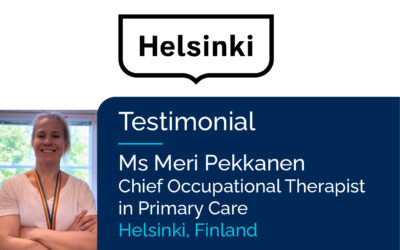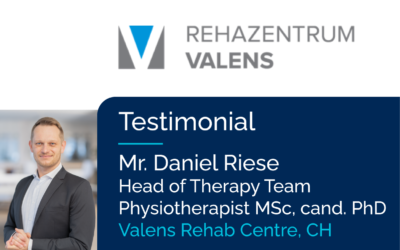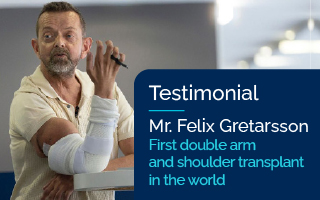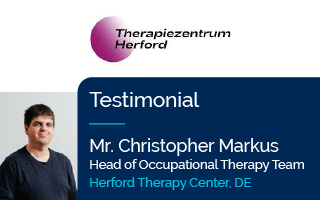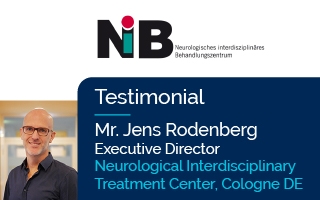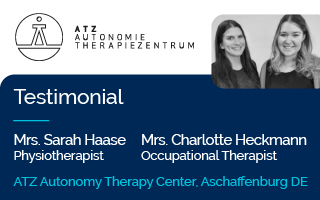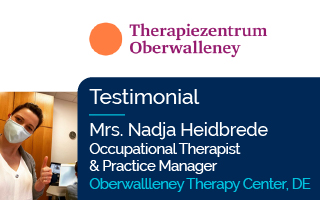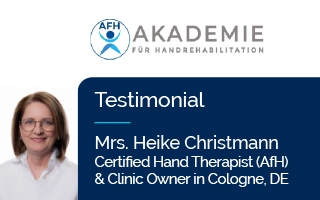The City of Helsinki’s occupational therapy utilises visual illusion
With the Dessintey device, Mika Välimäki can see his paralysed hand making flawless movements. This is simply an illusion. In the new technology-assisted mirror therapy, the patient’s vision provides the brain with a representation of the correct motion. The first Dessintey system is being used for occupational therapy at Laakso Hospital in Helsinki.
Text: Terhi Kangas – Photos: Veera Kurittu
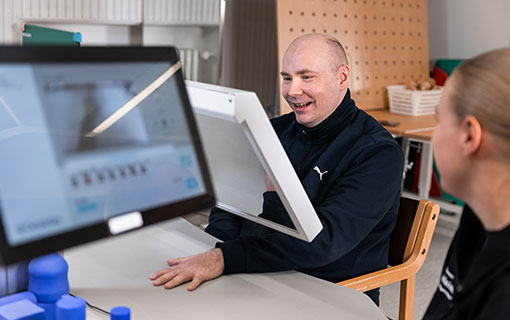
This is because Laakso Hospital is home to the first Dessintey device in Finland, which has been used for Mika’s rehabilitation once a week for ten weeks.
The left side of Mika’s body was paralysed as a result of an ischemic stroke in May 2022. Now Mika can already walk and, in his own word, his left hand is “pretty good but not perfect.”
“Essentially, you could say that where I had two hands before the stroke and one right after, I now have roughly 1.5 hands,” he says with a laugh and adds that he still has no feeling in his hand, despite the rehabilitation going well otherwise.
This session is the last of the rehabilitation period, so Mika and the occupational therapist Iina Ahlroos sat down to view videos recorded of the first session to draw a comparison to the current situation. Mika’s thumb was initially fully curled up, but now it is already moving.
“My hand moves more naturally and smoothly otherwise, too, but you can’t compare the movements to those of a healthy hand. I can soon test how I can handle my job as a warehouse worker. Then we’ll see what the arm and hand can do in actual working life,” Mika says.
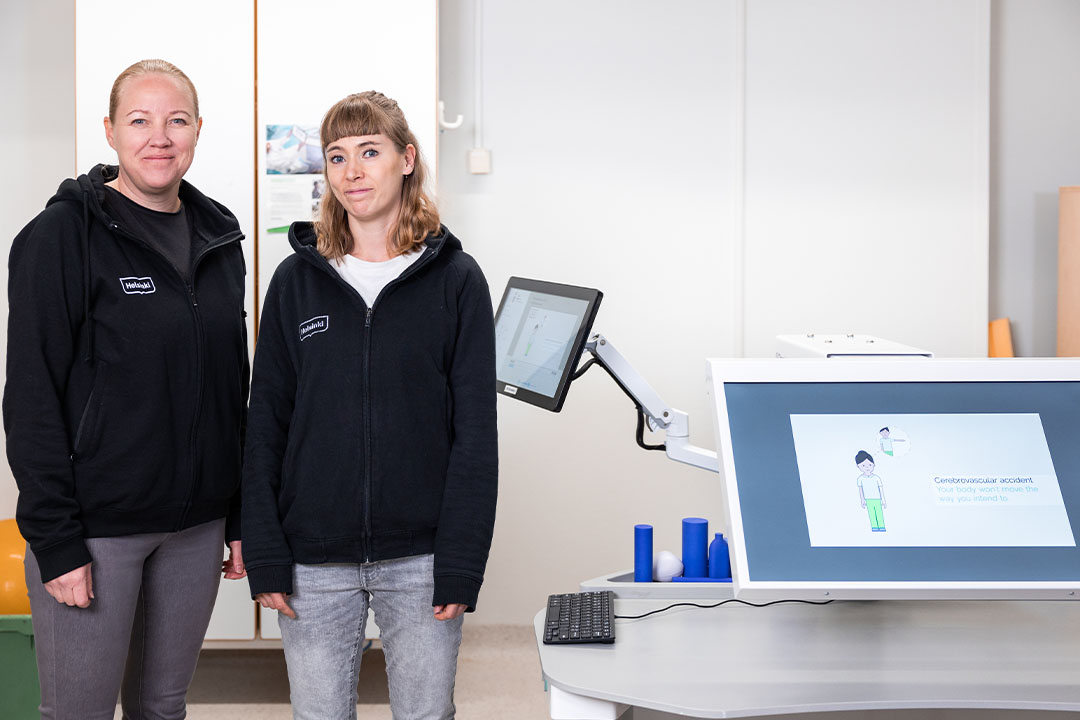
Justifiably tricking the brain
The Dessintey device enables Mika to see the ideal situation, i.e. his left hand in full working order. In actuality, what he sees is a video of his healthy right hand that the device has mirrored.
“It feels easier and more natural to complete the motions when looking at the video image. The feeling would be quite different if I were looking at the actual movements of the paralysed hand and arm. This is more motivating, even though I know that I’m not making the perfect motions.”
In a sense, the Dessintey device is tricking the brain. When the patient sees the hand being rehabilitated making flawless movements on screen, the brain receives the message that the movement is possible in reality. The effect is based on leveraging the plasticity of mirror neurons and the brain. The mirror image of the hand is like a personalised instructional video that guides the hand being rehabilitated in completing the same motions.
Occupational Therapist Iina Ahlroos says that the most important thing about the Dessintey therapy is to keep a focused eye on the video screen. The actual movement going on under the device is secondary. Specific practice movements are recorded to help each individual customer in their rehabilitation.
“We haven’t yet used any of the ready-made example videos, even though the Dessintey software includes them. In other words, we always begin the therapy period by recording video of the initial state. As the rehabilitation progresses, we record new movements as necessary.”
Since Mika has particular challenges with feeling in his hand, the movements customised for him often include something tactile to feel. This time, the exercises involve crunching kitchen paper into a ball, for example. It is easy to create variations of movements with the extensive support equipment.
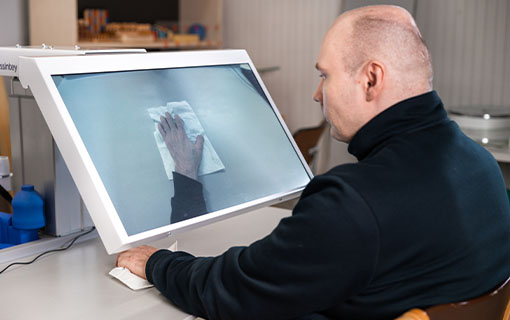
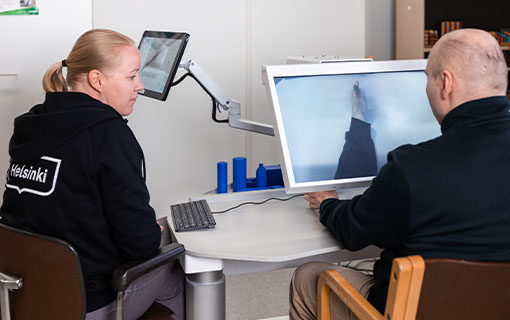
The device is effortless to use
Iina Ahlroos and Hanna Salo work as occupational therapists at the City of Helsinki Health and Well-being Centre and in the customers’ own day-to-day environments. The City of Helsinki gained access to the Dessintey system in the autumn of 2022. The device has been in active use from the start, and the booking calendar is full even now.
“Specific occupational therapists have been designated to take charge of the Dessintey customers. Fysioline initially provided us with two sessions of user training, which ensured that we had the confidence to use the device. The user interface is easy enough that we will be able to train colleagues in house,” Hanna Salo explains.
During the first year, roughly ten therapists have used the Dessintey with their patients; some work at the neurological rehabilitation units of Laakso Hospital while others are in open care.
Not all occupational therapists in Helsinki’s basic health care have yet used the technology-assisted mirror therapy in their own work. The aim is to steer customers that can benefit from Dessintey to Laakso for occupational therapy from more units.
As part of the range of rehabilitation services provided, Dessintey can be helpful in many types of cases. For example, studies have shown mirror therapy to be effective in the treatment of phantom pain, but the City of Helsinki has no practical experience form the treatment of amputees just yet.
“The Dessintey solution would seem to be ideal for patients with cerebrovascular disease, but there have also been successes in alleviating neglect symptoms. The device helps focus attention on the side that is neglected due to the disorder. In these cases, the Dessintey is great at, in a way, waking up the body,” Iina Ahlroos describes.
One customer felt the relaxation brought on by the Dessintey exercise until the evening, which helped to straighten out the arm and hand much easier than before. The immediate effect was still there when it was time for bed.
The Dessintey device is also suitable for therapy in small groups. The participants can take turns completing a 15-minute exercise based on a personalised recording without the therapist having to sit next to them the whole time to provide guidance.
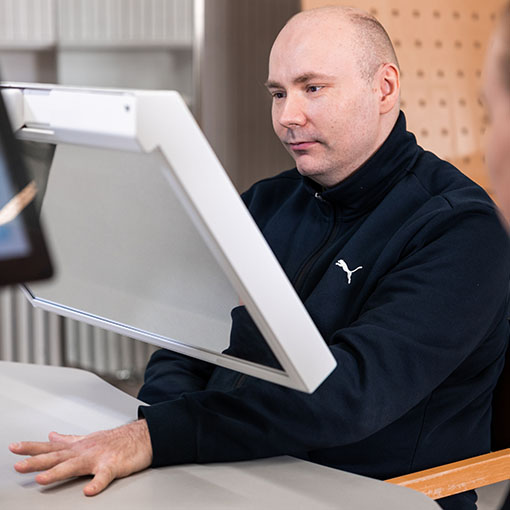
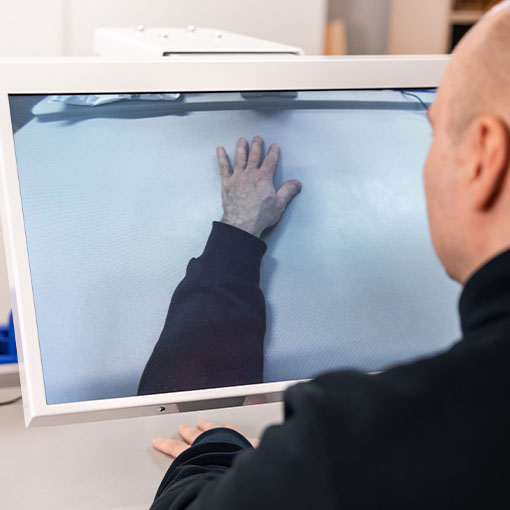
Assessment as part of Dessintey therapy
The Dessintey device has also been tried with customers with a plegic hand, which is limp and has very little functionality as a result of a stroke. Even if the hand is initially almost useless, the rehabilitation can be kicked off with the device, since the brain is able to work with the video.
This means that the hand does not need to have even rudimentary functionality for the customer to be able to receive meaningful rehabilitation. Every exercise session leaves the brain with a positive image. From the perspective of the brain, there are no unsuccessful repetitions in the practising process.
“Moreover, the Dessintey substantially relaxes curled up spastic hands. The device has also been used to rehabilitate CRPS patients with pain in their upper limbs, for example. Regardless of the diagnosis, all of our rehabilitation patients have found this method to be very meaningful and motivating.”
That said, some customers have had initial difficulties coming to grips with the fact that the Dessintey treatment period rehabilitates the brain more than motor capabilities. When the patients realise that it is ultimately unimportant what the hand does, the purpose of the mirror therapy becomes clearer.
The Dessintey has been used for about 30 minutes per patient in one session. When the therapist notices that the focus begins to wane, it is a good idea to switch to more traditional rehabilitation methods. Sometimes this may happen 10 minutes in. Mika Välimäki has had the stamina to focus on practice for as long as 45 minutes, with a couple of breaks in between.
An initial assessment is always prepared for the City of Helsinki’s Dessintey patients as part of the treatment period. The same tests are repeated during the last rehabilitation session to gradually collect more general data on the impacts and efficacy of the therapy.
“We use standardised upper limb tests in the assessment. In addition to this, we determine each rehabilitation patient’s self-assessment through an interview. Video comparisons are also good, because they provide a concrete way for the patients to see the changes that have taken place during the rehabilitation period, as it was the case for Mika today,” Iina Ahlroos says, happy with the results.
